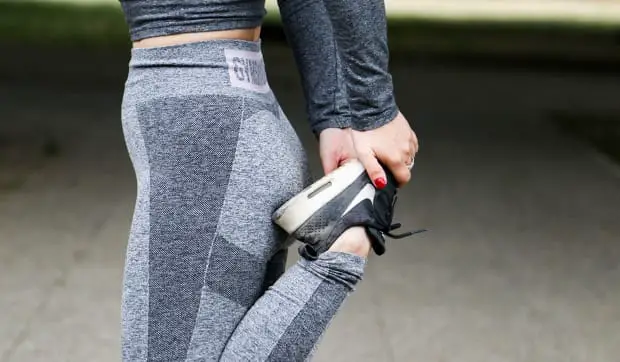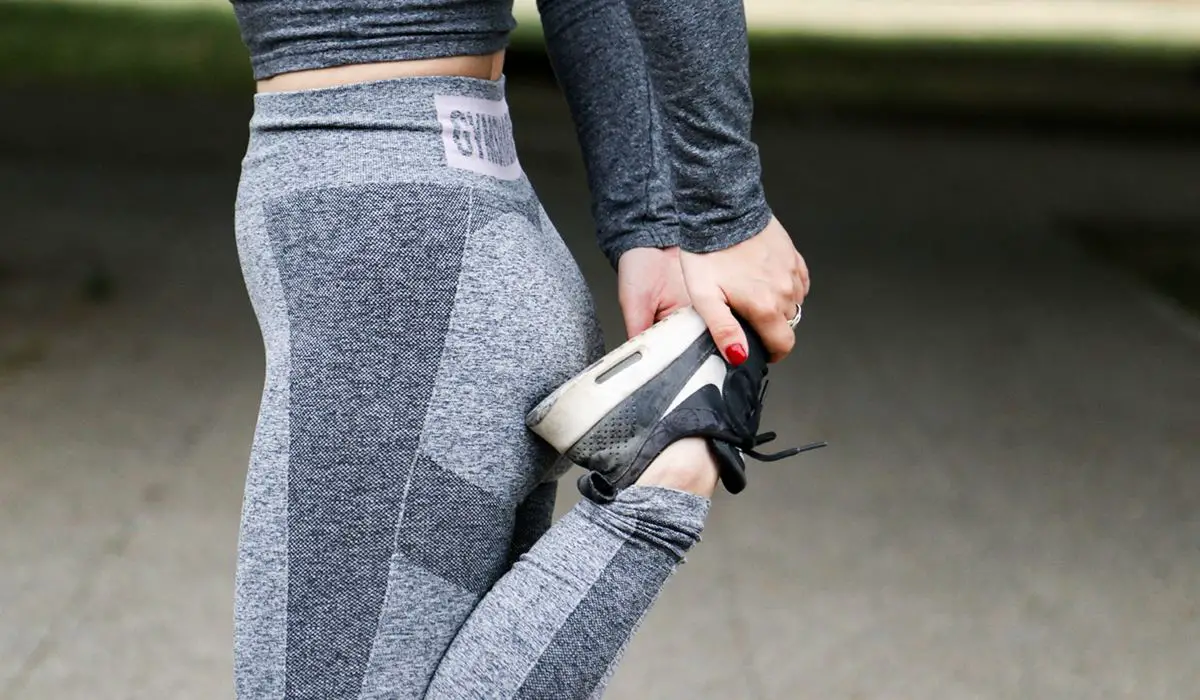This Is Exactly What You Need to Do to Build Stronger (and Bigger) Glutes According to The Glute Guy
This Is Exactly What You Need to Do to Build Stronger (and Bigger) Glutes According to The Glute Guy
Personal trainer Bret Contreras, a.k.a. The Glute Guy, shares with us his best tip for building your best butt ever.

Butts are back in a big way. Just check out your local gym or Instagram feed and you’ll see that #fitbottomedgirls continue to be all the rage. And while a nice juicy peach butt is certainly #goals when it comes to filling out a pair of jeans or bikini bottoms, glutes are way more important to the body than their aesthetic might have you believe.
Glutes According to The Glute Guy
Due to their attachment points, “they produce hip extension, hip external rotation, and hip abduction,” says personal trainer Bret Contreras, and author of the new book, Glute Lab: The Art and Science of Strength and Physique Training. “This makes the glutes paramount in just about all things athletic, including sprinting, jumping, cutting side to side, swinging, throwing, striking, kicking, climbing, and being on one leg at a time.”
Known as “the Glute Guy” Contreras knows a thing or two about butts. From his program Booty By Bret to his invention of the Hip Thruster, he’s the go-to guy when you want to build a stronger and defined backside.
Looking to add more shape and strength to your derriere? Here’s what Contreras had to say about building your best butt ever.
What are the Glutes?
“The glutes include the gluteus maximus, the gluteus medius, and the gluteus minimus,” says Contreras. “The gluteus maximus is over twice as big as the gluteus medius and minimus combined. They’re situated at the rear of the hips and are the keystone of the human muscular system.”
According to Contreras, seventy-five percent of the gluteus maximus fibers insert into fascia, “which makes it quite unique.” Through its fascial connections, the gluteus maximus connects to the tibia, erectors, pelvic floor, and more, which helps stabilize the SI joint and protects against knee, low back, and hip injuries. “It’s like a Swiss army knife as far as muscles are concerned,” he says.
The Most Common Mistakes
Training your glutes? Chances are you might be making one of the most common mistakes that Contreras says hinder your progression.
- Only training legs/glutes one day per week
- Just squatting and deadlifting for glute development
- Failing to perform horizontal and lateral/rotary glute exercises such as hip thrusts, standing cable hip abduction, and cable hip external rotation
- Thinking cardio helps build the glutes
As to why these mistakes are made, Contreras says he thinks it has a lot to do with the strength coaching profession being predominantly males.
“Men don’t seem to care as much about glute training (they should) as women and they assume they’ll grow their glutes maximally from squatting and deadlifting one day a week,” he says. “For some strange reason, they tend to label certain exercises that are brutal such as walking lunges and hip thrusts as weaker, and they fail to realize that hip abduction exercises target the upper glutes, which is responsible for creating a nice shelf.”
The Best Butt Exercises to Try Right Now
So what are the most effective exercises that Contreras recommends to work your glutes whether you’re at home or at the gym?
First and foremost, being the creator of the Hip Thruster, Contreras highly recommends adding hip thrusts into your routine.
“It activates the glutes higher than any exercise I’ve seen and is lends itself well to going light and utilizing the mind-muscle connection,” he says. It also works efficiently when “going heavy and utilizing progressive overload.”
Contreras also loves variations of glute bridges, squats and split squats, hip hinging movements like deadlifts, reverse hypers, and back extensions, and hip abduction and hip external rotation exercises like cable standing hip abduction and the seated hip abduction machine. He’s also a fan of band glute exercises like knee banded glute bridges.
“What’s so nice about glute training is you can always use bodyweight and band movements at home to get in a great workout,” says Contreras. “For example, you could do single-leg hip thrusts, knee-banded glute bridges, deficit reverse lunges, extra range side-lying hip abductions, and band seated hip abductions.”
The Takeaway
If you think there’s a lot more to glute training than just squats, you’re right. But Contreras says that’s key when it comes to improving your strength and body.
“There’s so much to learn about glute training and understanding it will prolong your lifting career by creating better balance and decreasing the likelihood of injuries,” he says. “But you need to work your brain outside of the gym just as hard as you work your muscles in the gym. If you train for four hours per week, you should read for 4 hours a week. Knowledge is power.”
Related on Organic Authority
How Barre Class Changed My Butt and Thighs
Get a Hot Yoga Butt with These 9 Poses
A Super Hot Butt: Why You Should Be Weight Lifting




